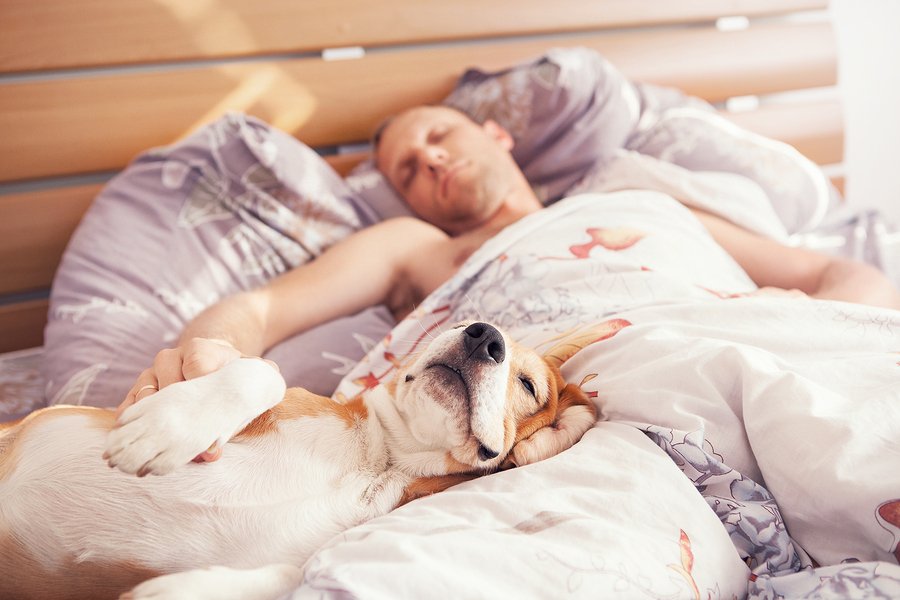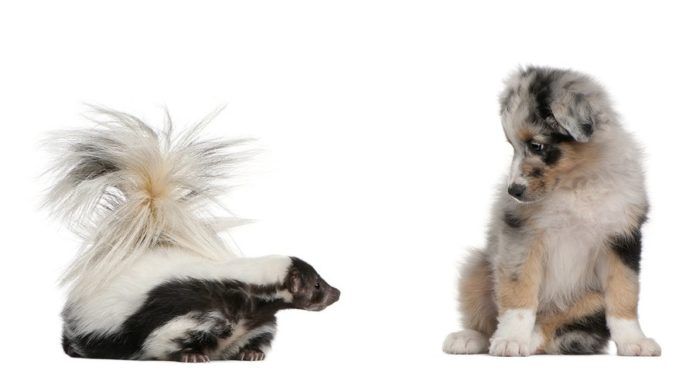Bigstock

There’s a lot of common knowledge when it comes to taking care of dogs — from friends, from the Internet, from companies marketing dog-related products. But “common” doesn’t mean “correct.” Are you able to separate urban (or suburban) myth from fact about what’s best for Fido? See how well you do on this quiz.
1. Your puppy, or even your older dog, has a bout of vomiting and/or diarrhea. The best way to get her through it is to
a) put her on baby food for a bit.
b) give her a little milk to drink.
c) get the dog to start eating again by introducing a bland diet of unflavored chicken
d) just ride it out until she feels better.
The correct answer is d, despite the scads of advice on the Web, and even from some veterinarians, to feed this or that food. Baby food is pretty rich stuff for a pup who’s sick to her stomach, and milk will most likely disturb an upset stomach even more. We’ve seen far too many dogs whose owners gave them one or both of those in the mistaken belief they would help — but they only made things worse. As for chicken and rice, it seems like a good idea. After all, when people have an upset stomach, they often return to food gradually, preferring un-spicy fare at first.
But dogs, when ready to eat after a bout of nausea, will do just fine on their own kibble. There’s no need to start them off on something else. And a dog will eat when she’s ready. Just make sure she has plenty of cool fresh water available, even if she doesn’t drink any for a day or two, and keep leaving out fresh food.
Of course, if a dog throws up or has diarrhea more than a few times, do not ride it out. It may very well not be something that will pass on its own but instead will require medical care. In cases where the problem persists, get her to the vet’s office. Days of vomiting and diarrhea can cause dangerous dehydration.
2. True or false? If you want a hypoallergenic dog, get a curly-haired breed like a Portuguese water dog or a poodle. It won’t shed so much.
False. There is no guarantee that a dog will not cause an allergic reaction, no matter what the breed and no matter what her coat looks like, even though the Internet is rife with lists of supposedly hypoallergenic dogs.
The substance on a dog that can cause an allergic reaction is not on her hair but in her skin cells (as well as her saliva). And all dogs slough off skin cells, also known as dander. There’s constant turnover. So a dog with curly hair, even though she doesn’t shed, can cause as much of an allergic reaction as any other.
Granted, skin cells can make their way into a dog’s hair, so theoretically, a dog who sheds a lot could cause more of an allergic reaction than non-shedders. But there are some people for whom even a very small amount of dander will cause itching, sneezing, wheezing, and so on. And there’s no way to tell ahead of time who’s going to be affected by which dog.
If you are allergic to your beloved pet, you can potentially cut down on allergic reactions by keeping her out of your bedroom; washing your hands after petting her; grooming her fastidiously; bathing her up to twice a week; and keeping the house clean by steam cleaning carpets and fabrics on seating. These all go in the can’t-hurt-might-help category.
3. Your dog has been sprayed by a skunk. The best way to get rid of the stench is to
a) bathe your pet in tomato juice.
b) bathe your pet in vinegar diluted with water.
c) bathe your pet in a combination of hydrogen peroxide, baking soda, and dishwashing detergent.
No solution is perfect; the odor of skunk spray is pretty persistent. But for the best results, go for c. Mix 1 quart of 3 percent hydrogen peroxide, cup baking soda, and 1 to 2 teaspoons of liquid dishwashing detergent. Use the solution immediately upon mixing it in a large open bucket. “Open” is key because the oxygen gas released by the mixture can cause a closed container to explode. And “immediately” is key because the mixture will lose its effectiveness if you let it stand.
Make sure to wear rubber gloves when applying, and let it sit for 5 to 10 minutes before rinsing thoroughly with tepid water. Repeat if necessary, and finish it off by bathing your dog with his usual shampoo.
4. True or false? All dog food labeled “Senior” has to have been tested on geriatric dogs.
False. A dog food could have been tested on puppies and be labeled “senior.” Or it could have been tested on no dogs at all. That’s because there’s no legal definition for “senior” when it comes to dog food. It’s simply a marketing ploy and means whatever the manufacturer wants it to mean.
Consider that while the veterinary community is making scientific inroads on the nutrition needs of older dogs, it hasn’t yet accumulated enough knowledge to set definitive standards. There are nutrition standards for growth (puppies); for gestation and lactation (pregnant and nursing dogs); and for maintenance (dogs at least one year of age). And that’s why you’ll see the terms “growth,” “gestation and lactation,” or “maintenance” in the Statement of Nutritional Adequacy in fine print somewhere on a bag or can of dog food. You might even see “for all life stages,” meaning that the food has high enough levels of nutrients to support the growth of puppies and the large nutrient needs of pregnant and lactating bitches in addition to those of all other adult dogs.
But you’ll never, ever see the term “senior” — or “older” or “aging” — on that statement, which is about requirements set by the Association of American Feed Control Officials, or AAFCO. That’s the organization that lays out the official canine nutrient profiles — the equivalent of the Dietary Reference Intakes for people. The only place you’ll see such words as “senior” is in large print on the front of the package, where, believe it or not, the rules for wording have more loopholes.
It should be noted that no dog food has to go through actual feeding trials with real dogs. Legally, a dog food can simply be formulated to meet the nutritional levels established by AAFCO. The Statement of Nutritional Adequacy will tell you whether the food has been put to the test in dogs. We suggest you buy dog food that has. It provides better assurance that the vitamins, minerals, and other essential nutrients in the product truly are digested and absorbed by dogs.
The bottom line: for your healthy aging dog, choose a food whose Statement of Nutritional Adequacy says it is either for “maintenance” or “all life stages” and also indicates that the kibble has been put through “feeding trials” rather than simply “formulated” to meet a nutritional profile.
5. Dogs
a) have a better sense of smell than humans.
b) have a better sense of sight than humans.
c) have a better sense of taste than humans.
d) have a better sense of touch than humans.
When it comes to detecting odors, dogs have it all over us. The correct answer is a. Consider that if you were to iron out the scent-detecting membranes covering the scrolled-up bones in a human nose, their surface would cover a thumbnail. Do the same for a dog, and the surface would cover a handkerchief. In addition, dogs have nearly 20 times more primary cell receptors in their noses than we do, and they’re able to detect odors at least 100 times less strong than a person can; in some instances, a million times less. Dogs live in an olfactory world of which we have only the dimmest notion.
When it comes to eyesight, they’re better at detecting motion than we are, especially in dim light and at night, but they don’t see as many colors as we do, and they don’t see them as intensely. Furthermore, they don’t have our ability to pick out fine details. Don’t ever ask a dog to drive the car or read the paper to you. His eyes just won’t be able to focus the way yours can.
As far as taste, we’re out in front. We each have about 9,000 taste buds on our tongues; they have fewer than 2,000. That’s part of the reason dogs barely chew before they swallow. They’re not going to get much of a flavor hit no matter how long food stays in their mouths.
Finally, when it comes to the sense of touch, dogs have it in a different place. Most of our touch receptors are on our fingers, particularly in the tips. Dogs’ nerve endings for touch are on the front of their heads — their muzzles. A dog won’t feel a new object with his paws as much as nudge it around with his nose.
6. True or false? A warm, dry nose means a dog is sick. It should be cold, or cool, and moist.
False. The temperature or relative wetness of your dog’s nose is not a clue to her wellbeing. If you want to search your dog’s face for a quick assessment of her general condition, look at the inside of her lip, or her gums. They should be bright pink rather than muddy in color (which could be a sign of shock). Even breeds with a lot of black pigment, like Akitas and chow chows, will have at least some pink on their gums.
You can also assess your dog’s health by taking her temperature with a rectal thermometer (that you use only on your pet). Normal is not a single number, as it is for people. It’s a range — approximately 100 to 102.5 degrees Fahrenheit.
Don’t take your dog’s temperature when she has just been running around. Wait till she has been calm for a bit. Otherwise you might get a falsely elevated reading.
Bigstock

7. True or false? It’s actually better for your bond if your dog does not sleep in the bed with you.
This one’s a trick question. The right answer is whichever suits you better. Of course, if you’re allergic to your dog, it’s probably better not to have her climb into bed with you. Dogs who snore (we’re thinking here of brachycephalic breeds like Pugs) might also be best kept off the bed so you can get a decent night’s sleep. Ditto for dogs who don’t recognize that you’re the leader and perhaps object to being petted or growl if you go near their toys and food. Such dogs need to be kept off high places as a way of teaching them their place in the household.
For everyone else, if you like the nighttime closeness, go for it. But understand that if you go for it and change your mind down the line, it could be hard to acclimate your pet to staying on the floor. You’ve got to go cold turkey. One night “on” and one night “off” will only confuse a dog and make her keep trying.
8. True or false. An electric fence is a surefire way to keep a dog contained.
False. Well over 90 percent of dogs do learn with an electric fence that if they try to cross the invisible line, they will experience a painful shock; therefore, they keep back. But not all of them heed the warning. Even companies that produce electric fences say that 2 percent of dogs don’t remained confined by the threat of a shock. (And that may be an underestimate.) Some dogs, if they are too enticed by something on the other side, will dart through and take the electric blow. Dogs have died going through electric fences — running into the street and getting hit by a car, for instance.
In other words, you’re never completely off the hook. If you leave your dog alone outside, you run the risk that something unfortunate will happen. That said, a safer bet is an actual fence. Yes, they’re more expensive, and perhaps more of an eyesore in some cases. But if it’s high enough, and planted deep enough into the ground, a dog will not be able to jump over or dig under.
9. The term “man’s best friend” was coined by
a) Homer
b) Prussian King Frederick II
c) Mark Twain
d) Henry VIII
It is believed that the correct answer is b. Prussian King Frederick II recorded the phrase in the late 1700s, although it was popularized in a poem by 20th-century poet Ogden Nash.





